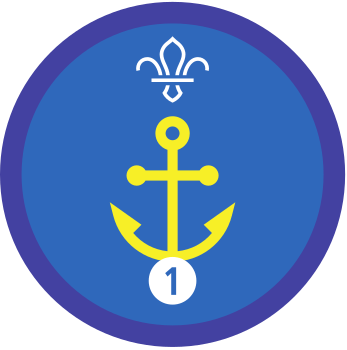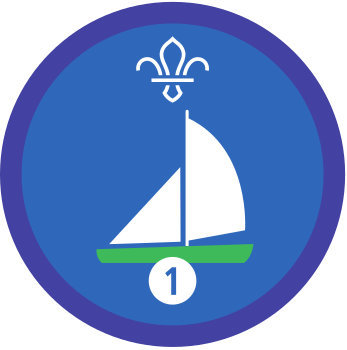Keelboating
What to expect
Keelboats are slightly larger than sailing dinghies. They have a fixed keel designed to turn the boat upright by itself if it capsizes. Keelboats are great for carrying more cargo and may have a small cabin for storing things or getting out of the weather. They’re often used on inland lakes for day trips.
For heading out on the sea or spending a night on the boat, you’d need a yacht. These are often larger with more protection from the weather and a small cabin on board for sleeping in. Yachting needs a few different skills and a different Scouts permit. More information about this can be found in this Yachting activity.
Keelboats are usually sailed by multiple people working together, controlling the sail to power the boat. Keelboating is a step up from dinghy sailing and a great way to put your skills to the test and work together with your crew to power through the water.
What you’ll learn
This is great preparation for learning yachting, as you’ll gain skills from managing a similar-shaped craft to a yacht that’s a bit smaller. At the same time, keelboats are larger than sailing dinghies and more advanced, with more things to remember and larger crews.
Fun facts
Keelboats originated on the rivers of what are now the western states of the USA, and are thought to have originally been conceived as ordinary skiffs (a kind of dinghy) with a plank nailed to the bottom to make them easier to steer and control.
Handy hints
- Grab a hat. Speeding through the wind, you’ll lose a lot of body heat through your head. Anything from a baseball cap to a woolly hat can help you stay warm while out sailing. It can keep your hair out your eyes too!
- Step it up. Keelboats can be trickier to sail and less forgiving than smaller dinghies. Try going dinghy sailing first to polish your sailing skills.
Safety
You must always:
- Complete a risk assessment
- Have the right ratios of number of adults to provide suitable supervision
- Set up an InTouch process
- Know what to do in an emergency
- Share information with parents and carers with an activity information form
- Get approval from your Lead Volunteer.
Be safe outdoors:
- Check the weather forecast
Be safe in water:
Everyone should be able to swim 50 m wearing the clothing or equipment for the activity. Non-swimmers will need additional support.
Water can be dangerous - be aware of the risks.
The category of water depends on how safe the water is. Use our waterways directory to check.
Be sure to manage the group when near water, keeping everyone safe.
Make sure that all equipment is fit for purpose and in good condition:
Everyone must wear a life jacket or buoyancy aid.
The instructor must make sure boats are seaworthy.
There are regulations you must follow if you are hiring a boat.
Joint activities with other organisations:
- This activity can be run jointly with Girlguiding.
- This activity can be run with other organisations.
This activity can be led by you or someone else in Scouts:
The activity leader must have an adventurous activities permit with the right level and permissions for your group.
You don't need a permit for activities on Class C waters (safe, inland water less than 100 m wide).
Where the group is entirely members over the age of 18 the permit scheme does not apply, please follow the rule 9.8 adult groups.
You can go to a centre or use an activity leader who is not part of Scouting:
You must find a suitable provider who meets the following requirements:- The centre/instructor should hold one of these: (If the provider is AALA exempt)
- Royal Yachting Association - Senior Keelboat Instructor
The provider must have public liability insurance.
Guidance
Reflection
Keelboating was a great way to get the team working together and give everyone some responsibility in their roles. People have been using different sailing boats for thousands of years to move themselves and their supplies all around the globe. Could they have done it without working together? What might’ve happened if people didn’t take their role seriously?
Without everyone working well and doing their jobs, sailing a boat would be extremely difficult. What other scenarios can you think of where this is true? So many things that we do rely on us working well with, and trusting, other people, so these are great skills to work on.
- Keelboating can often be adapted so more people can give it a go. Many outdoor centres have facilities that cater for people with additional needs and experienced instructors to help everyone achieve their goals. Get in touch with your local provider to chat through the needs of people in your group – make sure you give them plenty of notice.
- Keelboats can be quite large with plenty of space. They can also be adapted in many different ways to suit different needs. Try looking for a specialist centre in your area or get in touch early with your provider to make sure they can design a session to suit you and your group.
All Scout activities should be inclusive and accessible.
Why not put your sailing skills to the test and work towards your Nautical Skills Staged Activity Badge? Or ditch the boats all together and try an adventure like snorkelling.



